2009 Chrysler PT Cruiser – Click above for high-res image gallery
It wasn't so many years ago that Chrysler's design department was considered among the best in the industry. Attractive, innovative shapes came one after another, then they took a sharp detour into the crash test building and the rest is Sebring/Compass/Caliber history. In the late Nineties when Chrysler design was still on a roll, one of the highlights was the debut of the PT Cruiser.
As insolvency fast approached, CEO Bob Nardelli and his staff were scrambling to find cars to kill and, unsurprisingly, the nearly decade-old PT wound up on that list. Surprisingly, after exiting bankruptcy court in July, Chrysler decided to keep the PT alive through the end of 2010 when new models start arriving. After perusing our review list and realizing that, like the S2000, we've never tested the PT, we called Chrysler to get one last go-'round in the retro-hatch.
Photos copyright ©2009 Sam Abuelsamid / Weblogs, Inc.
Chrysler's PT Cruiser first debuted in 2000 as an evolution from a pair of earlier concept cars, the 1997 Plymouth Pronto and 1999 Pronto Cruizer. As is often the way with hardcore retromobiles, the PT's design has proven to be both a blessing and a curse. When it was minted, the Cruiser was instantly recognizable and couldn't be confused with anything else on the street – and things stayed that way until the Chevrolet HHR made a belated arrival to the party in 2005.
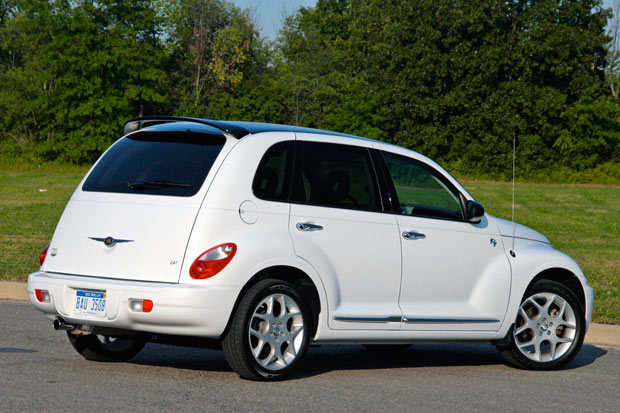
Unfortunately, the Bryan Nesbitt-penned paddywagon's heavy reliance on historical pastiche has made it difficult to update – perhaps not as much as a more literal exhumation like the Volkswagen New Beetle, but it remains tough to re-recreate an already familiar form. For the most part, Chrysler was stumped about how to evolve the PT, and as a result, today's edition doesn't look much different than the very first example that rolled off the line nearly a decade ago.
Over the intervening years, Chrysler created a gaggle of limited-edition PT variants – notably the Dream Cruiser series created in conjunction with Detroit's annual Woodward Dream Cruise. In fact, the tester you see here is a Series 5 Dream Cruiser – a trim job that doesn't feature any notable mechanical upgrades.
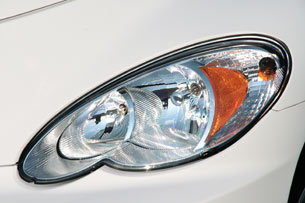
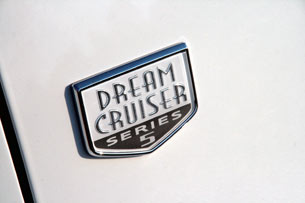
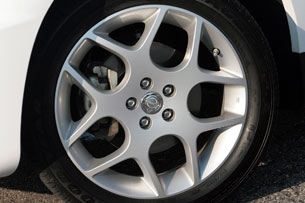
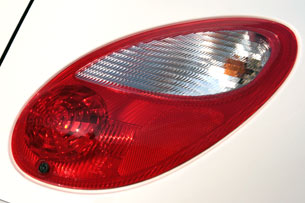
Aside from the addition of an optional turbocharged engine and a very mild facelift in 2006, almost nothing of significance has changed about the Cruiser since its debut. From a packaging and functionality standpoint, though, that's not an entirely bad thing. The PT was one of the original tall wagons, a genre recently popularized in the form of space-minded economy cars like the Scion xB, Kia Soul and Nissan Cube.
Like other econoboxes, our Cruiser has a more upright stance than most traditional hatchbacks and sedans of similar size. That verticality extends to the PT's driving position as well – it has the sort of formal, tall hip-point seating that crossover drivers celebrate. As it happens, the PT was also something of a pioneer in flexible packaging and seating in small vehicles. Along with the rear seats, the front passenger seatback also folds flat to accommodate long objects, and in the cargo area, Chrysler provides a sturdy parcel shelf/cargo cover that can be erected at two different heights or removed entirely. With the back seat up, the PT has 21.6 cubic feet of space ahead of the tailgate.
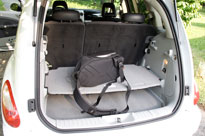
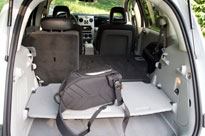
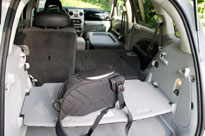
Unlike newer machines from other automakers, there are some oddly archaic details about the Cruiser, some – like the prominent push-button door handles – that are part of the vehicle's intentional nostalgic flavor, but it's hard not to notice the dated dashboard expanse. From the driver's seat, the PT's basic ergonomics remain sound (save perhaps the high center-mounted window switches), but Chrysler's lack of investment over the past decade shines through loud and clear in the materials and switchgear on duty. Further, assembly quality and panel gaps are noticeably subpar. When you grasp the spherically knobbed shift lever, you can feel the parting line around the center, and the button on top is ill-fitting and wobbly. Similarly, lifting the armrest reveals untrimmed flashing around the edge of the bin.
Another place where our PT Cruiser lags behind the competition is in powertrain refinement. Its 2.4-liter turbo four makes 180 horsepower and 210 lb-ft of torque. Considering its competitors, that's not a bad sum, but it's not particularly more powerful than the less expensive, normally aspirated competitors of similar displacement. In the case of our tester, that lack of power and comportment was hampered by a lethargic four-speed automatic. Predictably, acceleration isn't glacial, but it's also less than enthusiastic.
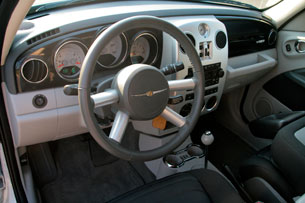
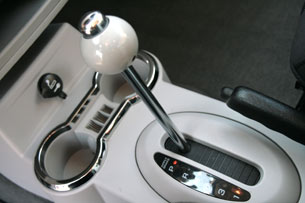
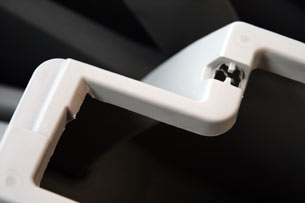
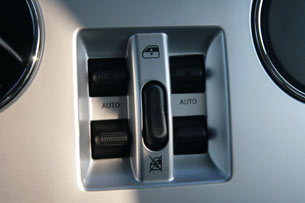
The PT's suspension tuning, on the other hand, remains significantly better than the powertrain it supports. As you may recall, the Cruiser was derived from the platform of the long-gone Dodge Neon, albeit with a beam rear axle replacing the independent configuration of the sedan.Yet even with its aging architecture, the ride quality exhibited over some of the worst pavement we could find was still very acceptable. The body's vertical motions remained fairly well-controlled and the suspension consistently did a commendable job of absorbing surface disturbances.
If there's a glaring flaw in the PT's suspension portfolio, it's insufficient roll control. Compared to the rest of the MPVs and hatchbacks on the market, the PT rides on a narrow track, something that's exacerbated by its relatively tall body form. As a result, the Cruiser leans rather heavily when cornering hard – not quite to the levels of a vintage cartoon paddywagon, but certainly more than what we're accustomed to experiencing.
Thankfully, the utility quotient of the PT Cruiser remains excellent thanks to its flexible seating, but given its compact dimensions and modest performance, the fuel economy we experienced was disappointing. After a week in our evaluator, we barely managed 19 mpg. The EPA has rated the turbocharged PT at 18 mpg city and 24 mpg highway, so our figure isn't an aberration. For comparison's sake, the base, normally-aspirated engine clocks in at 21/26 with a five-speed manual or 19/24 with the auto-box.
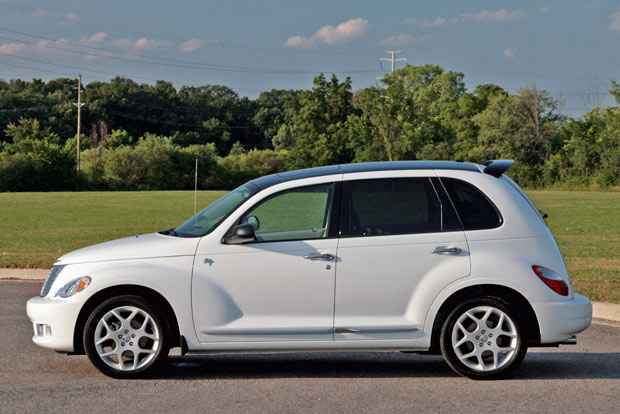
So, a milquetoast experience with an aging car. No surprises here, right? Hang on - there was one truly jarring moment we encountered with the PT – looking at our tester's sticker price. Chrysler charges $18,720 (including delivery) for a plain-jane Cruiser. The well-equipped Touring model starts at $20,530, landing on the wrong side of pricy for our tastes and our fully loaded Dream Cruiser came with a hang-on-to-your-wallet sticker price of $26,120.
Of course, given that sales for this senior citizen have fallen off precipitously from its salad days back at the dawn of the decade (not to mention Chrysler has long since paid for the PT's tooling) actual dealership transaction prices are significantly lower. Chrysler has been offering huge rebates on the PT for eons now, so if you are still charmed by the PT's relentlessly retro looks after all these years, you're in luck – not only have Chrysler's new Fiat overlords given the Cruiser a longer lifespan, you can actually get some pretty amazing deals.
Photos copyright ©2009 Sam Abuelsamid / Weblogs, Inc.

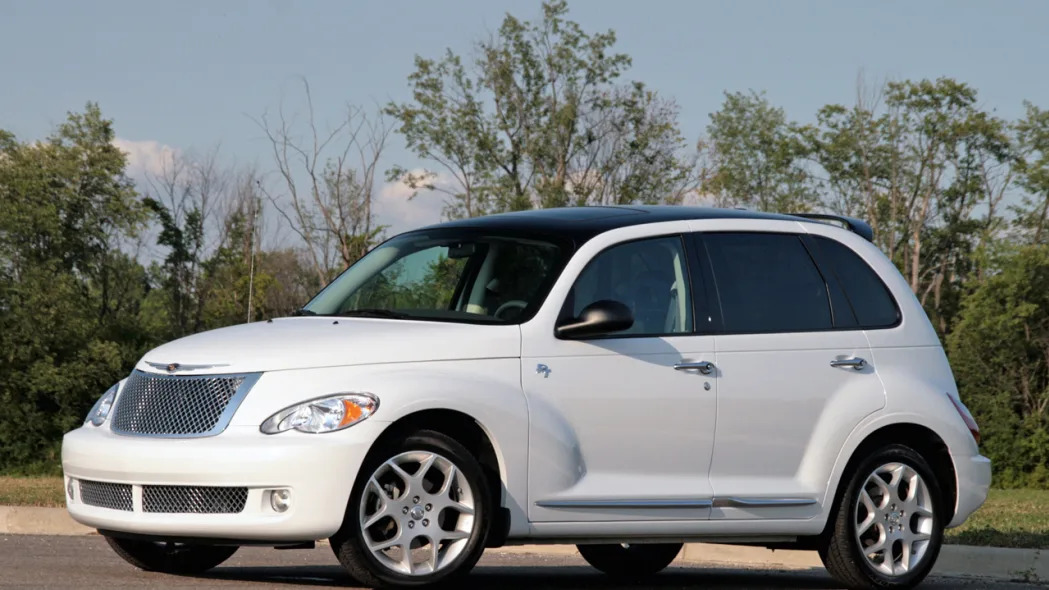

Sign in to post
Please sign in to leave a comment.
Continue